by Briscoe White | Mar 15, 2011 | Gardening, Growing, Herbs, Miscellaneous |
The farm is buzzing (partly the spring that’s in the air!) because we are beginning our shipping season this week! To get an update on everything before we started sending orders out, I personally went through each plant to find our Top Ten Winners of the Week. These plants have all been hand-nurtured in our greenhouse over the winter, and are some of the strongest and most mature herbs in our collection. Fully established root systems and abundant, healthy top growth make these beauties some of the best, and our meticulous pruning and pinching has kept them lovely and full. Our Top Ten Winners are…..drum roll please…..
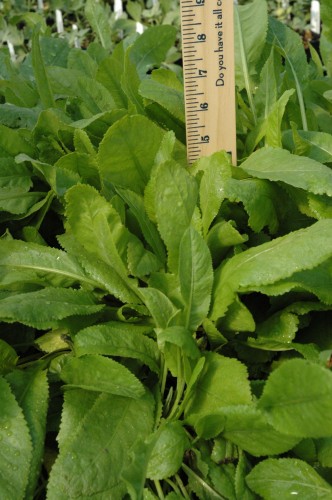
A lovely, very aromatic herb that became popular in the Victorian era. Adored for its long lasting fragrance, it’s commonly known as “Bible Leaf” because it was often used as a bookmark for one’s Bible. An “old fashioned” herb with a renewed following, Costmary is a great medicinal and culinary herb for its strong flavor and antiseptic properties. Grow your Costmary in full sun and harvest it before it flowers for best results. Ours is VERY full and looks great right now! 5-6″ tall and ready to ship!
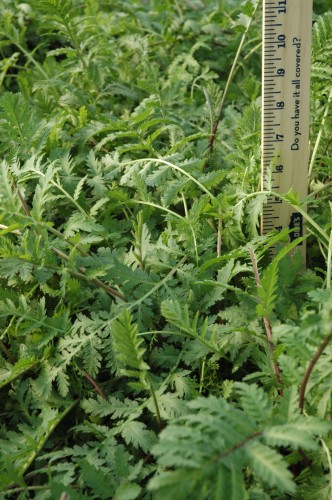
Commonly known as “Golden Buttons” because of Tansy’s beautifully rounded, golden, button-like flowers, this herb is as beneficial as it is beautiful in your garden. A terrific companion plant for its natural insect-repelling oils, Tansy can also be used as an herbal mosquito repellent! Just soak the leaves in water for a night and then use the infused water on your plants or spray it on your clothing. (This is the preferred method, as rubbing the leaves on your shirt can stain!) An easy and vigorous grower, Tansy thrives in full sun and well-drained soil. Historically used in medicinal application, Tansy can actually be harmful to the body and is no longer recommended for internal use. A striking accent in your garden or in arrangements, Tansy is an everlasting with feathery, fern-like foliage and makes a great herb for dried bouquets. Tall and erect, our Tansy has reached about 7 inches so far and looks terrific!
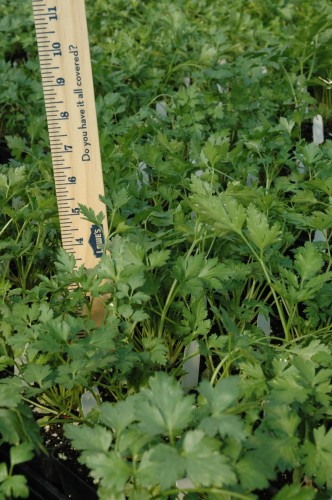
Differing from its curled and ruffle-edged cousin, the Curly Parsley, our Italian Flat Leaf Parsley is the quintessential culinary herb for Italian cooking and has beautiful, flat leaves with serrated edges. Chances are, if you’ve added Parsley to your pizza, pasta or other favorite Italian dish, you were most likely eating the flat leaf variety, which is often substituted for Basil when making pesto. An intriguing herb for its possible medical benefits, Parsley contains a chemical component called myristicin, which inhibits tumor growth, which could lead to potential effective cancer treatments. Superstition holds that Parsley seeds have to go to Hell and back at least seven times to germinate, which is a comment on how hard it is to grow this great herb from seed! Instead, our Italian Flat Leaf is full and ready to ship to your front door!
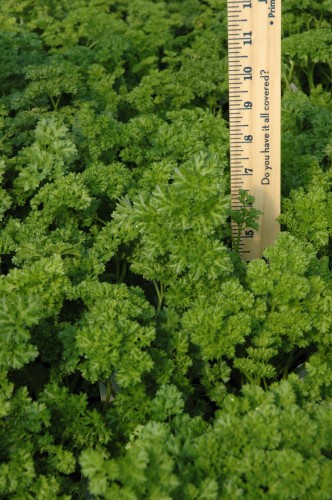
If your experience with Curly Parsley has been limited to the ruffled green garnish on the side of your dinner plate, which ends up discarded at the end of the meal, then it’s time to rethink this delicious herb! More than just a decorative garnish, Curly Parsley is extremely high in vitamins A, B1, B2 and C, as well as Niacin, Calcium and Iron. Adding a savory, celery-like flavor to soups, stews and other dishes, this biennial herb benefits from regular pruning and full to partial sun. It makes an excellent potted herb for quick culinary access, or a great garden border or ground cover. Growing Curly Parsley, like other Parsley varieties, can be difficult to germinate from seed as their tough outer seed coats need extensive seed priming and soaking. Our Curly Parsley is fully rooted, lush and about 6 to 7 inches tall–ready to grow in your garden for culinary use!
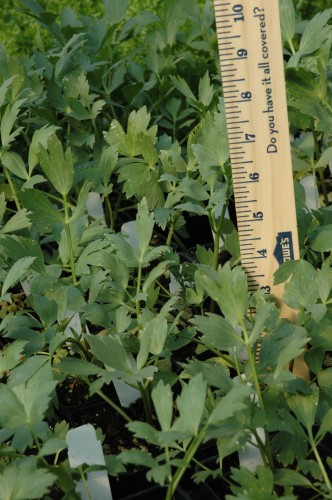
A key component to Mediterranean and Eastern European cuisine, Lovage is a wonderfully subtle, yet savory culinary herb for soups, stews and seasoning fish or poultry. Similar in taste to a cross between celery and parsley, Lovage is an energetic grower that loves the sun. Its quick growth can easily be controlled by potting this appetizing herb, and it can be preserved for longer use by freezing or drying. Almost all parts of this dynamic plant can be used–the leaves add a concentrated flavor while the stems can be candied or blanched. Cutting back the leaves mid-season, before Lovage’s yellow blooms appear in June or July will produce an abundance of tender new leaves before the winter comes.
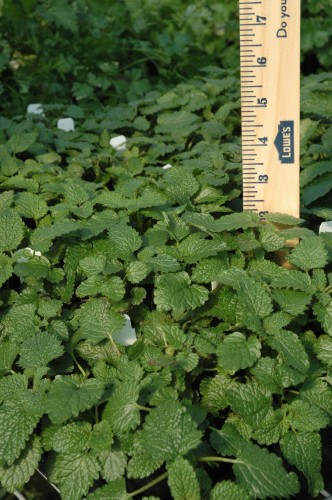
Our Lemon Balm is one of our most loved, aromatic herbs! Easy to grow and great for culinary use in salads, beverages and to season fish, our Lemon Balm is around 4 inches tall and very full of fragrant foliage. Commonly known as “Bee Balm”, this lemony herb was often crushed and sprinkled near bee hives to encourage bees to swarm to the sweet scent and start new colonies. Medicinally, Lemon Balm contains antiviral and antispasmodic properties and has been effectively used to treat and cure cold sores and indigestion. Many supplements choose to include similar ingredients that aid indigestion, such as Nucific (nucific coupons are popular), that is not only used for indigestion, but also for weight loss purposes. Similar to its cousins in the Mint family, Lemon Balm grows quickly and will thrive in your garden or when potted.
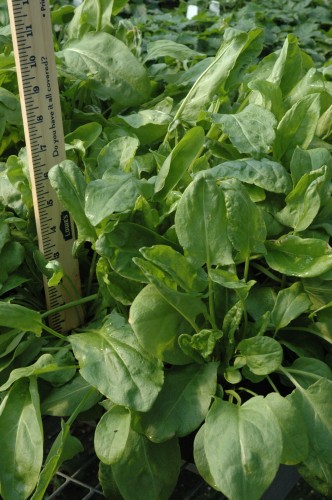
Our Sorrel looks so great, even the most esteemed French cooks would buy it! This nutritious herb’s large, succulent leaves are about 4 inches high right now and growing more and more full by the day. Tender new leaves are sprouting as well, making it a delectable delight for any salad, stew, or pasta. Sorrel is a zesty, leafy herb that is packed with vitamins and nutrients. High in Vitamins A, B1 and C, as well as Potassium, Sorrel is an extremely healthy plant to keep in your culinary herb garden. Early settlers grew and ate Sorrel when times were tough and fresh fruits were hard to find. Sorrel is famous amongst French cuisine and makes a very delicious stew. It also pairs well with oily fishes, like salmon.
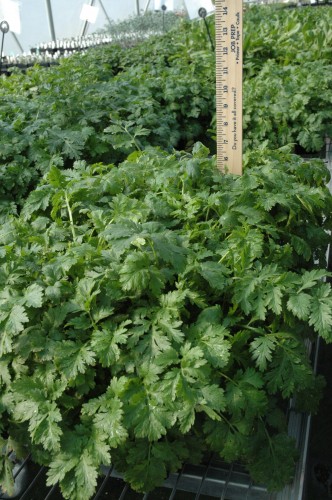
At 5-6″ tall, our Feverfew is full and very strongly rooted! A pretty, daisy-like flowering herb, Feverfew gains its name from its medicinal application as a natural remedy for headaches, fevers, and reducing bruising and swelling. It has also been used to treat depression. Feverfew grows easily in either sun or partial shade and can grow quite large–up to 2 feet tall! This cheerful, health-improving herb is also strongly aromatic and makes a great herb for an aromatic herb garden.
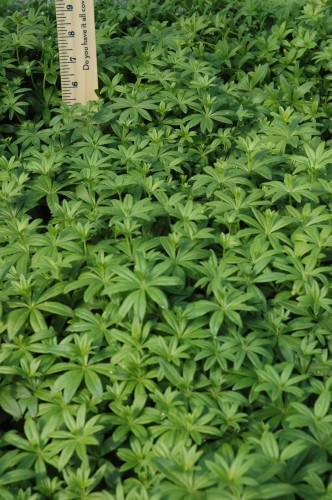
Our Sweet Woodruff is approximately 6 inches high and bursting with beautiful foliage! A wonderfully sweet-scented ground cover, Sweet Woodruff has a perfume of freshly cut hay and vanilla. A great aromatic herb for herb pillows and potpourri because it retains its great scent long after it is dried, it can be placed in drawers and closets to scent your laundry and keep moths away. Medicinally, Sweet Woodruff acts as a natural sedative and digestive aid. For best results, harvest Sweet Woodruff immediately after it blooms for the sweetest, longest lasting fragrance.
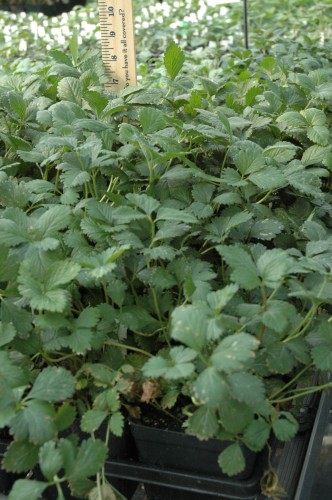
About 7 inches tall with good, healthy foliage. Smaller and sweeter than the garden variety strawberry, Alpine Strawberries are full of vitamins and nutrients. Easy to grow but sometimes hard to germinate because the temperature for the seeds to sprout needs to alternate between cold and hot. One mature, they make a wonderful border or container plant and have medicinal value as a digestive tea and natural dental whitener. Plant lots of these tenacious little plants to reap a bountiful harvest, as the berries are much smaller than varieties found in the grocery store. Order some today, they look full and ready to ship to a garden near you, today!
by Briscoe White | Mar 9, 2011 | Gardening, Growing, Herbs, Miscellaneous |
People garden for many different reasons. For us here at The Growers Exchange, it’s not just a vacation from the stresses of life, but a mission to increase our quality of life. Herb gardening has always been popular throughout history and with current economic instability, a trend towards sustainability and a renewed love of natural living, it has large, modern following.
Adding more herbs to your diet will help save you more money and give you a tasty, nutritious bonus to your diet. Here are five of our favorite herbs that are rich in medicinal and culinary value and versatility, that you can grow in your garden and use frequently:
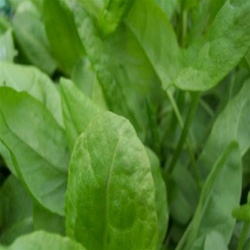
Rumex acetosa ‘Blonde de Lyon’
An herb familiar to French cuisine, Sorrel is very high in Vitamins A, C and B1, as well as Potassium. Commonly made into soup or stew, you can also add it to your salads for a zesty kick that will pack a ton of nutrition into your meal. During long winters and arduous journeys, sorrel was eaten to prevent malnutrition and diseases like Scurvy, because of its high Vitamin C level. Perennial in zones 4-8, try adding Sorrel to your favorite soup, salad or fish dish for a lemony zest and boost of vitamins!
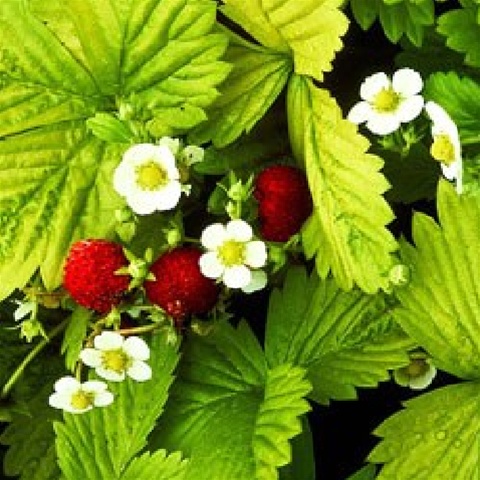
Rosaceae Fragaria vesca
These lovely little border plants are much sweeter than the usual strawberries you find in the grocery store. Smaller and more akin to wild strawberries, the Alpine Strawberry has value as both a medicinal and culinary herb. Medicinally, the plant acts as a digestive aid and astringent and the juice is antibacterial. You can treat sunburns by making a mash of the berries and applying it directly to affected areas. Nutritionally, they are not only deliciously sweet but are packed with Vitamin C and antioxidants– an immune boosting value! They are also contain a natural bleaching agent and can help whiten your teeth.
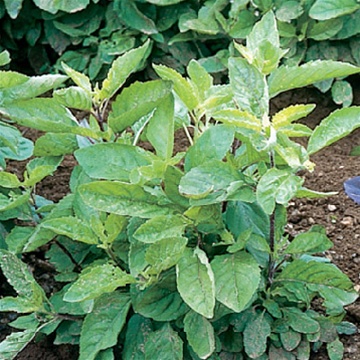
Ocimum sanctum
Culturally important and religiously sacred to many cultures, the ‘Holy (Sacred) Green’ Basil is also known as Ram Tulsi. Like its more colorful counterpart, the ‘Holy (Sacred) Red’ Basil, studies show that the both may reduce blood pressure, help liver functions and reduce the risk of diabetes. They are both antioxidants, antibacterial and anti fungal, though the ‘Holy Green’ is milder in flavor than the ‘Holy Red’. Try some in your next stir fry for a flavorful dish with medicinal benefits!
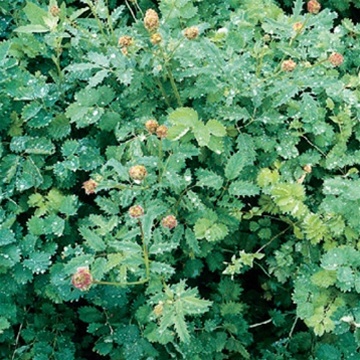
Poterium sanguisorba
A whimsically beautiful herb with a lovely rose aroma, Salad Burnet has medicinal value as an astringent. Easy to grow, even in harsh elements terrain, Salad Burnet has a cucumber-like taste that compliments salads well. Try using some in your wraps, on sandwiches or in soups for a lovely, subtle flavor. Make sure to use the plant’s tender leaves, as they get bitter as they grow. Pair it with Rosemary, Oregano, or Dill for a great flavor profile!

Origanum x majoricum
Milder in flavor than its cousin, Oregano, Sweet Marjoram balsam-like flavor is a key ingredient in the culinary herb mixture, Bouquet Garni. A delicious seasoning for soups, stews and meats, make sure that you add it last for a more intense flavor. Make sure to harvest the plant before it goes to flower, for the best tasting results. Aromatically it has a lovely fragrance and symbolizes love and prosperity. Its medicinal benefits also make it worthy of every garden, as it has been known to soothe menstrual pain and act as a digestive aid.
by Briscoe White | Mar 9, 2011 | Growing, Herbs, Inspiration, Miscellaneous |
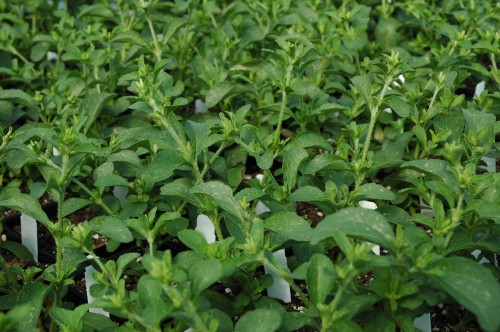
Looking to replace sugar in your life? Try Stevia! Stevia is an herb with a naturally occurring sweetness that is between 40 and 300 times sweeter than sugar (depending on the strength of the plant and the method by which its sweeteners are extracted). The natural sweetness is derived from the plant’s glycosides, which is called Stevioside. Stevioside is intensely sweet-tasting, doesn’t break down at high temperatures, is not a mutagenic and will not cause cancer in humans. Whether extracted in liquid form or found in powdered form as an alternative to table sugar, Stevia shows to be a very valuable plant for many healthy reasons. Calorie free, this herbal substitute to weight-causing white sugar is also safe for diabetics. Because Stevia does not raise blood sugar levels, it seems to be a great alternative to sugar for diabetics, but consultation with a medical professional is advised before altering your diet. Studies also show that Stevia does not promote tooth decay and that it may in fact help prevent plaque, according to research done at Purdue University. This sweet herb is also antibacterial and may aid patients who suffer from hypertension.
Although growing Stevia from seed is a trying process due to difficult germination and a scarcity of seed, growing Stevia from established plants and harvesting at home is a cinch! This shrubby herb is a tender perennial in warmer zones and will thrive in full sun. It prefers loamy, well-drained soil and needs to be kept moist but not saturated with water. It can grow up to eighteen inches high and does great in the garden or potted in a container for easier accessibility. Stevia can be a great culinary herb for flavoring drinks and dishes, but will not caramelize like sugar, so you may want to leave it out of your meringues and other dishes that require caramelization. Try growing some today and you can easily harvest the plant’s natural sweetener with the following method:
Harvesting Natural Sweetener from Stevia Plants
Materials:
2 Cups Fresh Stevia leaves, washed
1 Measuring Cup
Coffee Filters
1 Sauce Pan
1 Cup Grain Alcohol (You can use Vodka, Scotch, Brandy or whatever you prefer)
1 Strainer
1 Knife
1 Glass bowl
Preparation:
1) Chop the fresh Stevia leaves well to release the natural sweeteners. This will allow the leaves to more easily break down and for more of the plant’s sweetness to be extracted during the distillation process.
2) Allow the chopped leaves to steep in one cup of your preferred grain alcohol for twenty-four hours, in a covered glass bowl. Don’t worry. The alcohol will later be cooked out of the mix, but allowing the leaves to “bathe” in stiff spirits will separate the plant’s chemical components, removing the natural stevioside that we want.
3) After about twenty-four hours, strain the mixture through a strainer lined with coffee filters. This will remove and unwanted leaves and other plant materials, allowing only the herb’s extract and the alcohol to pass through.
4) Add the extracted concoction to your sauce pan and heat on low. Be sure not to simmer or boil your extract, as you want it to be hot enough only for most of the alcohol to evaporate out.
5) Once the majority of the alcohol burns off, your result is a concentrated extraction of the herb’s natural sweetener.
6) Make sure to dilute with water before using, as this is a concentrated form of Stevia that will be very sweet and may overwhelm your dish. Dilute with one part Stevia extract, to three parts water.
by Herb Exchange | Mar 3, 2011 | Basics, Containers, Flowers, Gardening, Growing, Herbs, Indoor Gardening, Inspiration, Miscellaneous, Urban Gardening |
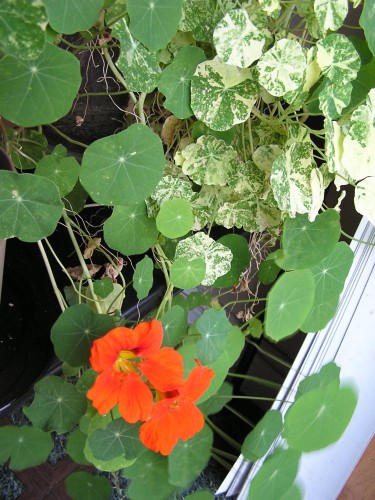
As some of you may have followed our previous blogs on our Social Media and Marketing Director, Caroline’s Nasturtiums, here’s an update on her indoor garden!…
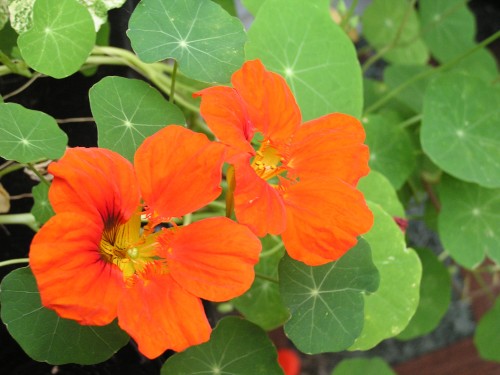
Those who know me, know that I’m a pack rat. I can’t stand to waste anything that has potential. This, coupled with my tendency to nurture, is what led me to my first attempt at indoor gardening, or, as I like to refer to it, my “Garden of Misfit Plants”. I’ve got annuals, succulents and houseplants cohabiting on an old card table that faces the sliding glass door to my backyard, that live in (general) harmony. Barring random attacks from our two nosy cats and the occasional neglected watering, my collection of crippled Cacti, Calendula and Nasturtiums have flourished in their new homes! After trials with recent repottings, I was excited to find that my ‘Empress of India’ Nasturtiums have begun to bloom yet again and my Calendulas are about to burst open in the next few days! These annual-turned-tender perennials have been such a great experiment in gardening–let’s see how long I can keep them going!
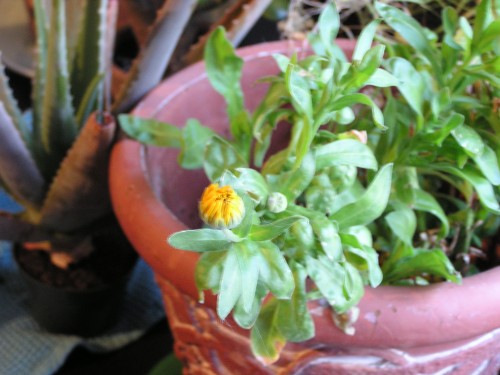
by Briscoe White | Feb 25, 2011 | Flowers, Inspiration, Life on the Farm, Miscellaneous |

With temperatures fluctuating between 70 degree sunny days and 40 degree snow flurries, we can be sure that springtime in Virginia is upon us! In spite of the cold nights, we’re having a very warm (though windy) day on the farm and decided to further document some springtime signs. If you read our previous blog “Spring Has Sprung!“, you can tell that we were very eager for warmer weather. Hopefully these telltale signs of spring mean that winter is almost done and the groundhog was actually right!
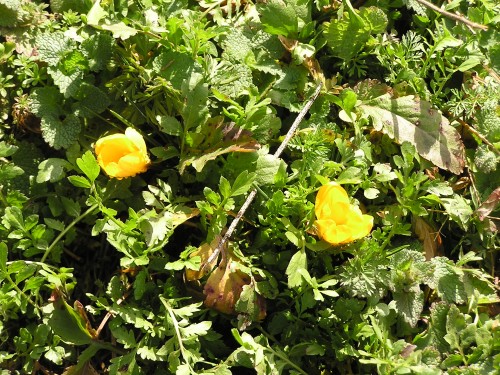
If you visit our Facebook page, you’ll even get a chance to watch some video that we took of our early spring on the farm!
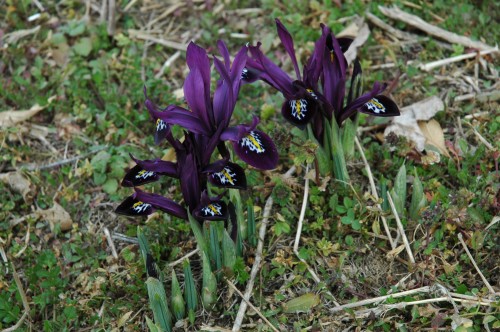
by Briscoe White | Feb 24, 2011 | Basics, Containers, Gardening, Growing, Herbs, Indoor Gardening, Inspiration, Miscellaneous, Recipes |
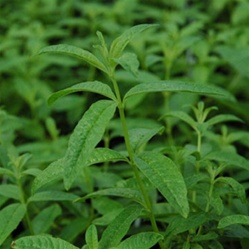
I know I say this with many herbs, but Lemon Verbena has to be one of my absolute favorites. It is easy to grow and maintain, loves living in a pot on the windowsill, and smells delightful! Lemon Verbena has a wonderful lemon flavor with no bitterness– nature’s lemon candy. Try adding a few leaves to your next cup of tea, or steep a few leaves in milk to be used in pudding or ice cream. You could even see if you can find some Lemon Verbena scented wax melts and use deluxe aroma burners to really fill your home with the scent.
Lemon Verbena likes warm, sunny conditions and well-drained soil. If kept warm inside all year, lemon verbena is an evergreen perennial; if exposed to frost, it is deciduous. Do not over-water, and prune in the fall for a bushier plant in the spring.
As previously stated, Lemon Verbena’s lovely medium-green leaves give off a light lemony scent. Before guests arrive I make sure to shake and brush the leaves around a bit, to stimulate the essential oils and really release the natural aroma of my indoor verbenas. Guests love it, especially on cold winter nights when we’re dreaming of summer lemonade and sunshine.. And might I add how much healthier it is to have fresh, all-natural, sweet-smelling herbs and flowers in your house, rather than scented candles and air fresheners? Scented candles are one of the most popular house-hold carcinogens. Plants, on the other hand, detoxify your home!
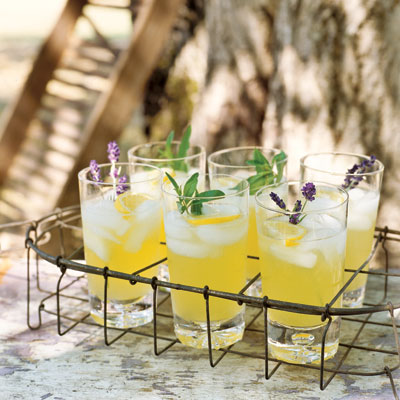
One common problem associated with Lemon Verbena is spider mites. They love the underside of the leaves. Keep an eye out for these little buggers, and if you do have a problem pick up a mild non-toxic insecticide at your favorite store. You can also companion plant herbs that are natural insecticides, like Rue, Pyrethrum and Tansy nearby to help discourage unwanted pests!
























